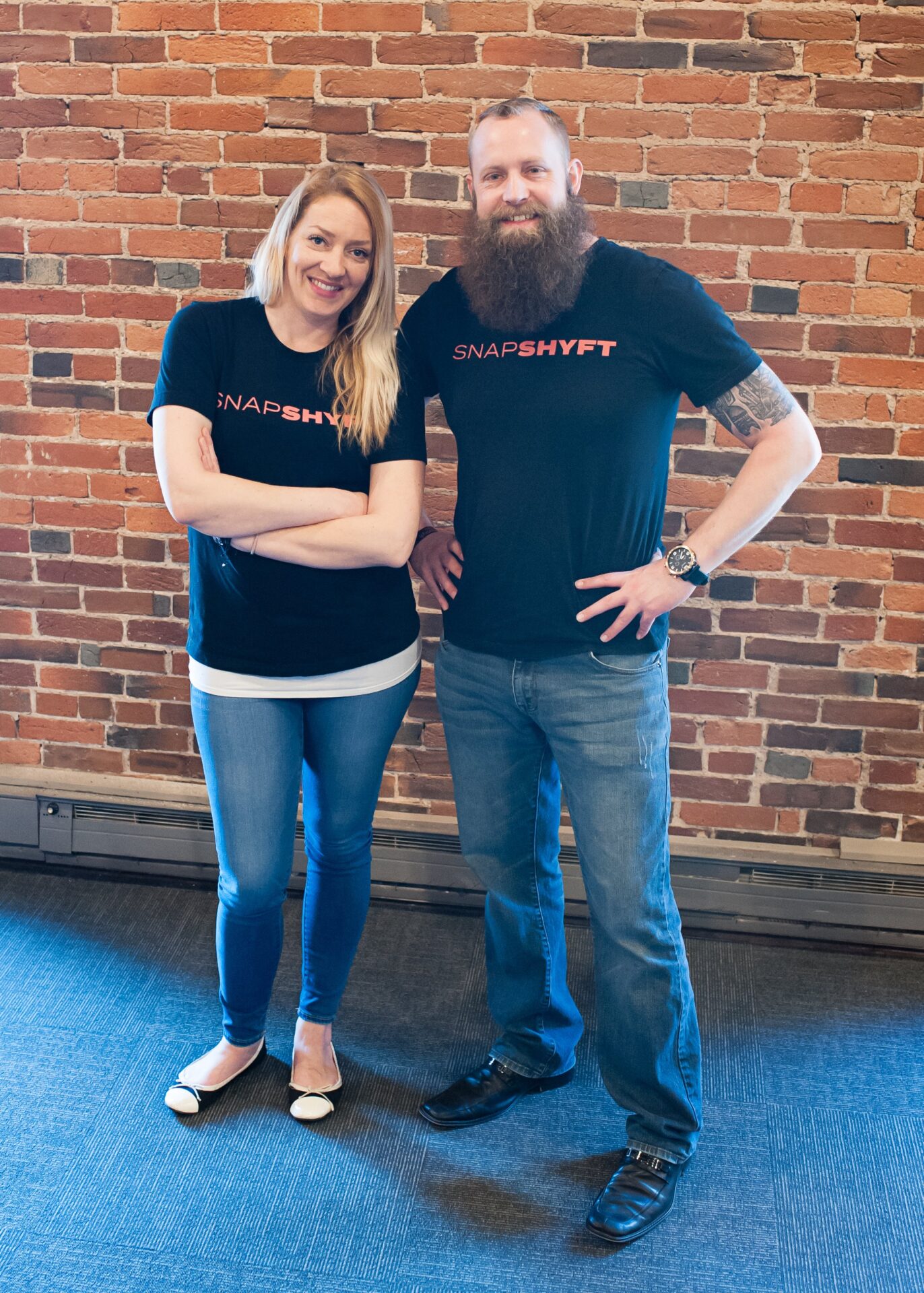SnapShyft levels the playing field for workers and solves major headaches for employers
As with most startups, it pays to be first, fast and agile, and being the Uber or Airbnb of any industry is a cool position to be in. SnapShyft—the gig economy answer to a variety of the hospitality industry’s biggest problems—is coming up on its one-year anniversary next month, and the fast-growing app is earning its reputation for all of the aforementioned attributes and comparisons among hospitality workers, employers and interested investors in the state of Indiana, the greater Midwest and West Coast.
Having just finished a highly successful run this spring in the first Indianapolis cohort of gBETA, an expansion portfolio for the nationally ranked startup accelerator gener8tor, SnapShyft was one of a handful of local startups invited by the state of Indiana and gener8tor to exhibit in a special pavilion at TechCrunch’s DISRUPT San Francisco conference in early September.
“We now have 5,500 workers and 150 venues using the SnapShyft platform in our Indianapolis launch market and it’s exciting to see this game-changing idea for the hospitality industry really take off and work so well for both key constituencies—the workers and the employers,” said Thor Wood, co-founder and CEO of SnapShyft. “We’re growing and hiring and proving the model that life is better with SnapShyft. That’s why we have plans to expand into four other markets by the end of the year.”
If you’re not familiar with how SnapShyft works, you can read some great coverage in the IndyStar and Indianapolis Business Journal, but the basic idea is creating a marketplace where wait staff, bartenders, cooks, chefs and other hospitality workers can make extra money (or find all of their work) picking up shifts as short-term laborers, and restaurants, bars and other venues including sports and music facilities, festivals and more can fill the gaps with qualified workers.

SnapShyft is tapping into some critical pain points that plague the hospitality industry, especially now that the unemployment rate is so low and workers feel more empowered to go where they are most appreciated. For the second quarter of 2018, more than 15 million people worked in the hospitality industry with hiring managers seeking to fill nearly a million job openings each of the three months according to the Bureau of Labor Statistics.
“The turnover rate in this industry is brutal; it’s not even two months for the average worker anymore in many subsets and that’s a serious challenge for managers looking to schedule shifts and keep customers happy,” Thor said.
Some of the key benefits for workers includes, first and foremost, the ability to select shifts that maximize earnings, but Thor explained that it’s not just about making a dollar more per hour. “Our users really like the flexibility of trying new things and meeting new people, and they can do all of this without having to burn bridges or give up their primary source of income by picking up shifts with SnapShyft,” he said.
Workers can also get paid immediately after working a shift, which has significant implications already, but will be even more valuable once SnapShyft expands into more markets. Users could be on vacation or out of town visiting friends or family and decide to pick up shifts so they don’t run out of money. And with direct-deposit to debit cards and other payment methods, workers can access their earnings as quickly as 30-minutes after successfully finishing a shift
The seven-member SnapShyft team is keenly aware of its usage analytics and quickly iterates to meet preferences and solve for cultural or even gender disparities that have shown up in the data. For example, early-on they discovered that about 80 percent of their users were male and surveys revealed that women were less likely to use the app due to perceived safety concerns. Through targeted videos, social media and other communications and testimonials, SnapShyft was able to build confidence in their venue vetting and ratings system and today female users (54%) have surpassed male users.
The benefits to restaurants, bars and other venues are somewhat obvious in a full employment environment—filling gaps and reducing turnover—but there are additional, thoughtful benefits built into the SnapShyft platform. The rating system that lets workers know about the environment they are stepping into will also be available as an expanded system for venues to rate workers in upcoming releases, which will build up worker ratings based on desirable attributes like arriving on time and dependability.
“At the end of the day, what we’re building is something that solves some big, big challenges for an over $800 billion industry and benefits both the workers and the employers,” Thor said. “I predict that in a few years we’ll be able to look back over our data and national trends and say that we’ve had an impact on reducing the turnover rate and improving people’s lives while at the same time increasing revenue for the businesses that use our app. I think that’s a mission that’s going to help us as we hire for new sales and marketing and software roles, and it’s a mission that investors will get behind, too.”



